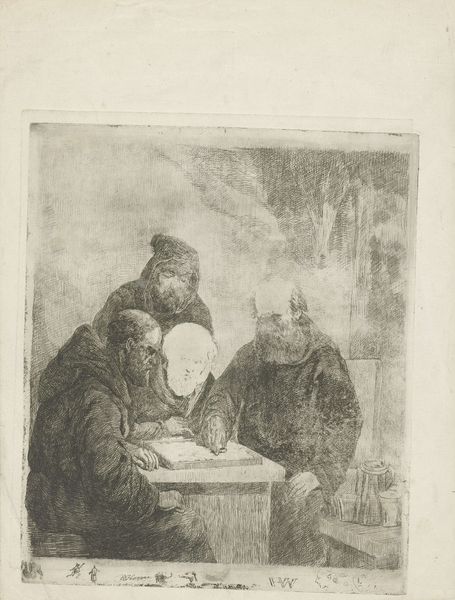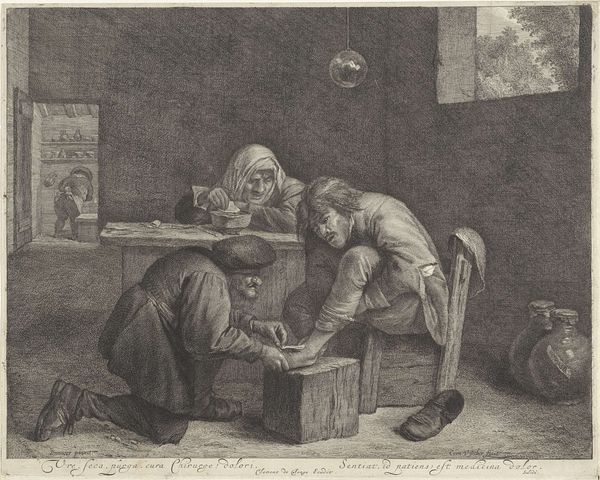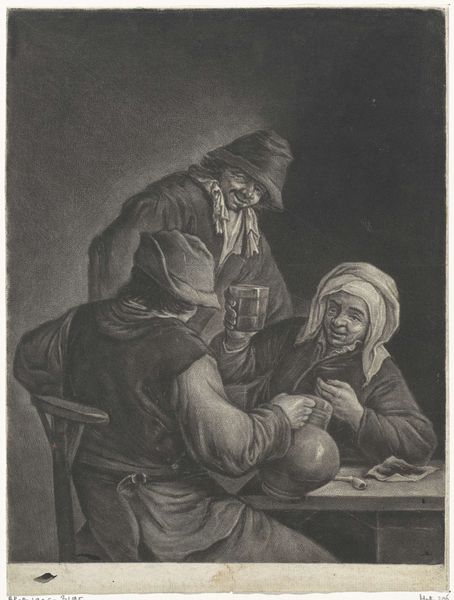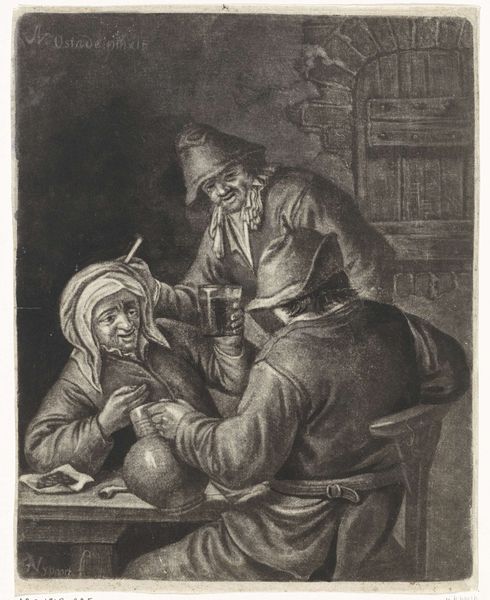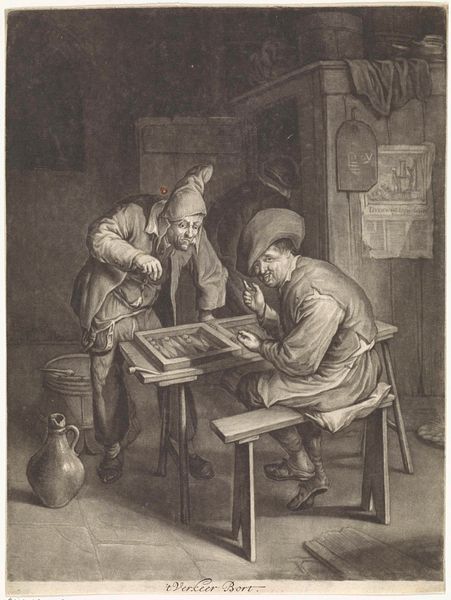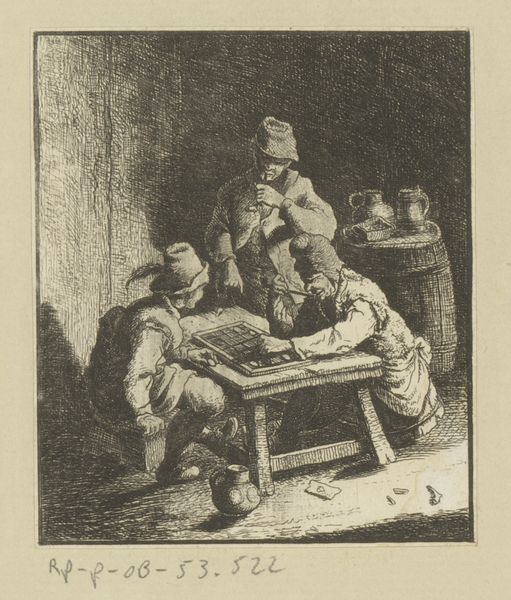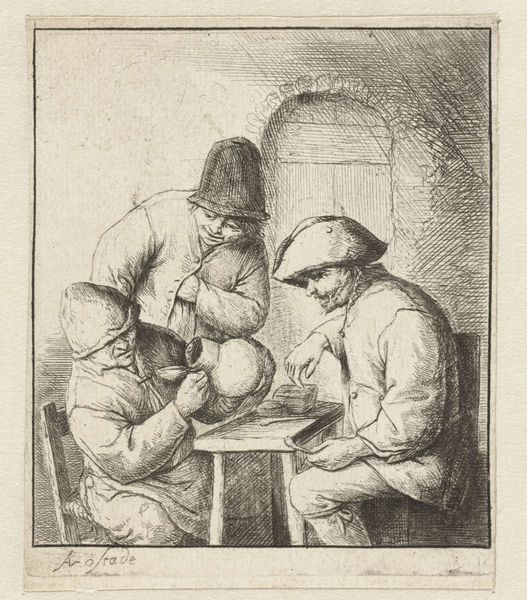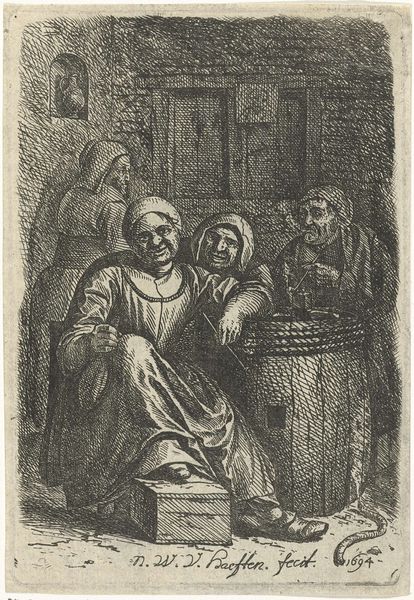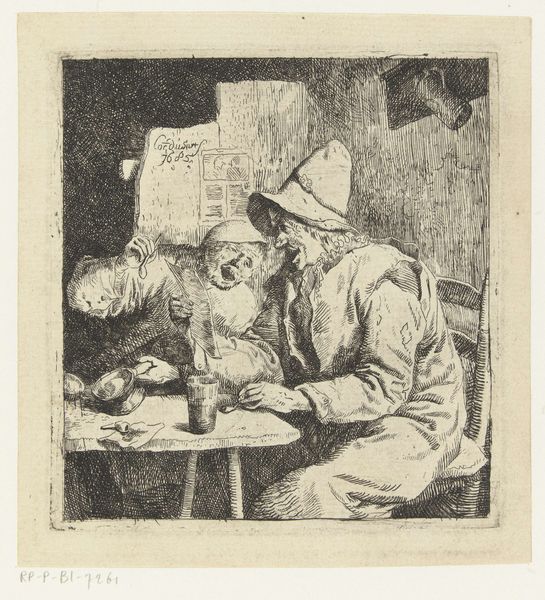
drawing, print, etching, ink, engraving
#
portrait
#
pencil drawn
#
drawing
#
light pencil work
#
medieval
#
quirky sketch
#
narrative-art
# print
#
etching
#
pencil sketch
#
old engraving style
#
figuration
#
personal sketchbook
#
ink
#
pen-ink sketch
#
sketchbook drawing
#
pencil work
#
genre-painting
#
sketchbook art
#
engraving
Dimensions: height 191 mm, width 233 mm
Copyright: Rijks Museum: Open Domain
Curator: We’re looking at Willem Pieter Hoevenaar's etching, "Dammende Monniken," likely created between 1814 and 1879. It depicts a group of monks intensely focused on a game. My initial impression is the mood is contemplative. Editor: Contemplative, yes, but also strangely secretive. The tight grouping, the muted tones achieved through the etching process itself… it gives the impression of a hidden, almost forbidden, activity. What do you see regarding the process? Curator: Hoevenaar was clearly skilled in the traditional methods of etching. We can observe the labor-intensive process through the density of lines creating tone and the precision needed to render the details of their habits and facial expressions. Consider the paper, the ink used—did he prepare these himself, contributing to the physicality of the work? What choices governed those processes? Editor: Absolutely. And thinking about the social context, monastic life at this time was already under scrutiny. What narratives were attached to these figures and the activities in which they engaged? Could the work be a commentary on the perception of religious orders and their engagement in worldly activities? Curator: It's interesting to consider this within the sphere of 19th-century Dutch art and the rise of genre painting. Etchings like this circulated widely. It highlights accessibility through mass production and how prints shaped understandings and perceptions. The lines between "high art" and more readily available visual material become wonderfully blurred. Editor: Precisely. These types of images play an interesting role. They’re a lens for reflecting broader societal narratives about faith, power structures, and the evolving notions of work, craft and class identity. Looking at their faces closely—notice how aged they are. The way that's portrayed feels meaningful, and raises the question as to why that might be. Curator: Good point. The artist likely wanted the monks' ages to convey some commentary. Editor: And that’s why context and the means of creating the images can matter! We began to unfold more nuanced possibilities from it, than at first it seemed! Curator: Exactly. Paying attention to both the context and construction grants a deeper connection to the art object.
Comments
No comments
Be the first to comment and join the conversation on the ultimate creative platform.
